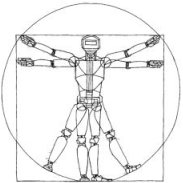Robotics: Science and Systems XVII
Probabilistic Discriminative Models address the Tactile Perceptual Aliasing Problem
John Lloyd, Yijiong Lin, Nathan LeporaAbstract:
In this paper; our aim is to highlight Tactile Perceptual Aliasing as a problem when using deep neural networks and other discriminative models. Perceptual aliasing will arise wherever a physical variable extracted from tactile data is subject to ambiguity between stimuli that are physically distinct. Here we address this problem using a probabilistic discriminative model implemented as a 5-component mixture density network comprised of a deep neural network that predicts the parameters of a Gaussian mixture model. We show that discriminative regression models such as deep neural networks and Gaussian process regression perform poorly on aliased data; with accurate predictions only when the sources of aliasing are removed. In contrast; the mixture density network identifies aliased data with improved prediction accuracy. The uncertain predictions of the model form patterns that are consistent with the various sources of perceptual ambiguity. In our view; perceptual aliasing will become an unavoidable issue for robot touch as the field progresses to training robots that act in uncertain and unstructured environments; such as with deep reinforcement learning.
Bibtex:
@INPROCEEDINGS{Lloyd-RSS-21,
AUTHOR = {John Lloyd AND Yijiong Lin AND Nathan Lepora},
TITLE = {{Probabilistic Discriminative Models address the Tactile Perceptual Aliasing Problem}},
BOOKTITLE = {Proceedings of Robotics: Science and Systems},
YEAR = {2021},
ADDRESS = {Virtual},
MONTH = {July},
DOI = {10.15607/RSS.2021.XVII.057}
}
